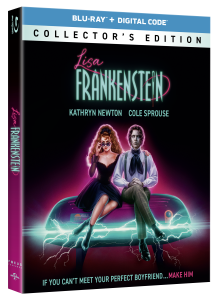Monochrome Review = Isaac Thorne
[youtube=https://www.youtube.com/watch?v=3sJZG2i3ZtU&w=320&h=266]
Black and White
Finding horror in Monochrome depends on how you see it
There’s a long-running debate among fans about how to best categorize the wealth of movies that are often lumped together under the label horror. That is if you can find anything classified as “horror” wherever you download or purchase your video entertainment. The primary litmus test most often used in this debate: is it scary? The problem with that particular test is that scary is a wildly subjective thing. What scares you—let’s say spiders and clowns—might seem harmless and silly to me. What scares me—let’s say plummeting from a ten-story building and being entirely conscious when I hit the ground—might feel far-fetched to you.
For example, fans seem to be able to agree that movies like 1978’s Halloween (a slasher film) and 1981’s The Howling (a werewolf film) are horror fare. However, you’ll get wildly differing responses if you happen to ask horror fans about films like 1991’s The Silence of the Lambs. The movie that shot Anthony Hopkins to fame is gory. It contains two serial killers: one of them a cannibal and one of them a transvestite who dresses in women’s skin. The one element that, for many, breaks the case for The Silence of the Lambs as horror is the police procedural aspect of the story. Add to this the fact that the film won five Academy Awards, and that the Academy is notorious for shunning pure horror; going so far, in fact, as to literally reassign awarded films to some other combination of a genre.
For me, The Silence of the Lambs is horror. When I first saw it, I felt the same visceral reactions to what was happening on the screen that I’ve felt on numerous other occasions. They are not reactions that can be provoked in me by a straightforward suspense thriller, drama, or romantic comedy. They are horror movie reactions.
When I was asked to review Thomas Lawes’ Monochrome (2018, Gravitas Ventures), I very nearly turned it down because it does not look like a horror film. Then I remembered my take on The Silence of the Lambs, and I felt like a hypocrite. It turns out there was a good reason for that: Monochrome is very similar to The Silence of the Lambs in many ways, but with a few of the roles reversed.
Gabriel (Cosmo Jarvis; Lady Macbeth, The Naughty Room) is a new agent with the British Crime Agency (BCA), a relatively new branch of British law enforcement. Gabriel has what the agency considers to be unique skills because of a neurological condition called synesthesia, which is sometimes called “blended senses.” People who have synesthesia might be able to see sounds or hear colors. The BCA believes Gabriel’s synesthesia might provide him with some unique investigative insights that are often overlooked by investigators who rely too heavily on modern technology and investigative techniques.
It is when Gabriel suspects that the death of his favorite visual artist Roger Daniels (James Cosmo; Wonder Woman, Braveheart, Highlander) might have been a murder that things take a turn for the sinister. As he begins to connect the dots, he discovers a string of similar murders wherein wealthy aristocrats are being taken down in unique ways yet not robbed of any money or material goods. The evidence eventually leads him to Emma (Jo Woodcock; Dorian Gray, Collision), a young woman who eschews cash and material goods but is on the lamb because of her suspected involvement in her boyfriend’s retirement fund embezzlement scheme. Unfortunately, Gabriel’s discovery leads to some ill will from a fellow agent who is investigating the plot, and it doesn’t help Gabriel that he refuses to perform his investigation by the book.
Overall, Monochrome is an exciting watch. As Emma forges her way through her bloodbath of the rich and famous, Gabriel is forced to deal both with a murderer at large and internal hostilities over a parallel investigation. The visuals in this film are impactful, the sound is of high quality, and the acting is entirely believable. The main issue I had with Monochrome was some of the character definitions and motivations in Lawes’ script. For example, we are allowed to see things through Gabriel’s synesthesia a few times over the course of his investigation. However, there’s no obvious reason for the character to have this condition by the film’s end. His synesthesia doesn’t aid him in his investigation, nor does it hinder him.
It is also challenging to understand Gabriel’s motivation for breaking the procedural rules when he does so. The first time he steps out of bounds feels entirely arbitrary. There was no reason for him to not trust that the BCA wouldn’t be there to support him. Gabriel obviously knows the rules but continues to ignore them for no reason outside of an apparent bond that exists between Gabriel and the agency’s human resources director. The HR director eventually provides Gabriel with crucial evidence after he is suspended for violating the rules, but that doesn’t seem like enough of a reason for Gabriel to go rogue and conclude his investigation without the BCA’s direct support.
Even with its flaws, Monochrome is an enjoyable watch. The parallels to The Silence of the Lambs become a bit more evident if you match Gabriel in this film to Jodie Foster’s Agent Starling and Emma to Ted Levine’s Buffalo Bill. But is it horror? Maybe it is. Perhaps it isn’t. That answer isn’t necessarily black-and-white. It’s all in how you perceive it.


